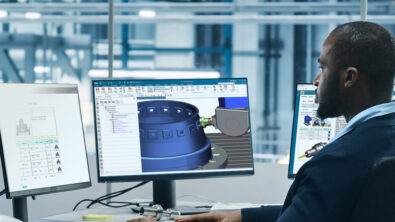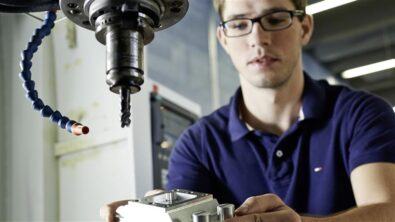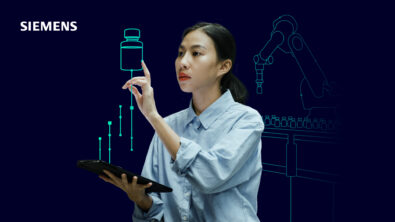The Emergence of Multi-Axis 3D Printing Solutions

Are you aware of the dramatic increase in the interest and use of 3D printing for industrial applications? 3D printing has been around for decades but whereas the early solutions looked more like futuristic chemistry experiments minded by laboratory technicians the latest techniques are surely set completely change the way real production parts are made. This however, requires a move from the “lab” to the shop floor and the adoption of systems that can sustain the demands of real world production. It also puts pressure on the need to be able to create parts with greater dimensions than can fit within the restricted printing envelope of some types of printing systems and to do so in shorter times.
If you look around a 3D printing exhibition today you will see that one of the most common variations in 3D printing for industrial use –are devices that print layer by layer on a flat horizontal plane. The powder bed, laser powered technology is a good example of this and these printers can produce complex metal parts but rather slowly and within significant size limitations. There are many variations of flat (or fixed) plane printing addressing many different material types. With a few notable exceptions the build process proceeds layer by layer in a vertical direction.
However a completely different approach to 3D printing is emerging and being used to create large and complex parts and in shorter times and typically using equipment that even looks a lot more industrial. In these cases the material (metal or “plastic”) is deposited via a deposition device that can be driven along a path in a 3D space by a full multi-axis system such as a robot. Simply put its like machining in reverse and we adding rather than subtracting material. Typically the material is transformed during the deposition process.If its metal it can be introduced as a jet of powder or as thin metal rods like welding rods. The heat source to “melt” the source material for the metal examples can be from a strange array of either lasers, electron beams, or electric arc power. For thermoplastics the deposition head can transform tiny pellets or reels of plastic strip into beads of deposited “plastic. Whatever the material, the key differentiator over fixed plane printing systems is the ability to place the material only where it’s needed to form the geometry of the part being printed. In many cases both the part and the deposition device can be moved in almost any direction under full simultaneous axis control via an advanced machine tool style multi-axis controller.
This multi-axis 3D printing has some interesting advantages. It’s generally much faster than many fixed plane systems (comparing metal powder bed to metal powder jet for example). The maximum part sizes are much bigger and potentially huge if the deposition device is attached to a robot on a rail or to a gantry system like a large machine tool.
As noted above, the equipment used for multi-axis printing typically comes straight from proven industrial sources. It can be either a multi-axis machine tool equipped with a laser metal powder system or other deposition system, or a robot, or in some cases we see a variation of some equipment originally designed for high end, large scale welding. Robots are often seen in “plastic” or composite material deposition and machine tools and welding style machines typically for metal deposition. Many companies and system builders are experimenting with variations of these and development is accelerating.
Two common elements of these emerging multi-axis deposition systems are the multi-axis software needed to create the deposition paths in 3D space and the advanced multi-axis controller to interpret these paths and drive the equipment. In the latter case, the Siemens SINUMERIK 840D controller often appears as a system of choice, known for its advanced multi-axis capability and often seen replacing the standard controller installed on an off-the-shelf robot in these situations.For the software many teams start with 5-axis CAM software but they soon see that, although multi-axis deposition case has a lot in common with basic 5-axis CAM calculations, there are big differences and many additional capabilities are required.
At Siemens PLM we have developed the NX Multi-axis Deposition module within the same framework as used for our well proven NX CAM software solution. We use all the core functions that NX CAM users take for granted such as handling part models, machine assemblies and kinematics, process simulation and post processing and much more. The new additive manufacturing functions create a whole new array of paths and deposition axis controls.For cases where the platform is robotic, the NX CAM Robotics solution, which is also built within the framework of NX CAM, is a natural fit from a basic path perspective the NX system sees it as just an alternative multi-axis machine to drive.
With so many development avenues and combinations of materials, power sources, equipment platforms and software the whole area of multi-axis deposition is one that seems set to explode as companies race to find cheaper, faster and more flexible ways to create advanced products tailored to specific customer requirements.
If you have any questions or comments about the article, or specifically about our solution, leave them in the COMMENT area below.


